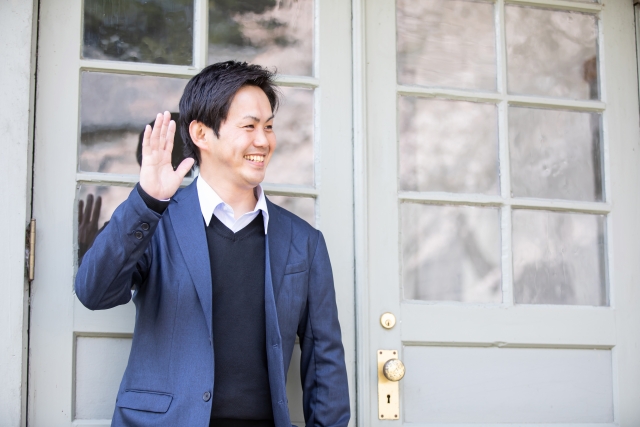Introduction
Learning how to greet people is one of the most important first steps when studying a new language. In Japanese, greetings are essential to daily communication and social etiquette. Whether you want to travel to Japan, make Japanese friends, or simply learn the language, knowing how to say “hi” properly can make a big difference.
In this guide, we’ll cover simple and friendly ways to say “hi” in Japanese, from casual phrases to more polite expressions. You’ll also learn when and how to use each greeting to sound natural and respectful. Let’s get started!
Basic Ways to Say “Hi” in Japanese
1. こんにちは (Konnichiwa) – “Hello”
Konnichiwa is the most common and standard way to say “hello” or “good afternoon” in Japanese. It can be used in most situations, both casual and formal.
When to use:
- During the daytime (around late morning to early evening)
- In both casual and polite settings
- When meeting someone for the first time
Example:
- “Konnichiwa! Watashi wa Emily desu.” (Hello! I’m Emily.)
Tip: Avoid using “konnichiwa” early in the morning or late at night. It fits best during daylight hours.
2. やあ (Yā) or よう (Yō) – “Hey!”
Yā and Yō are very casual greetings, similar to “Hey!” in English. They’re commonly used between close friends or younger people.
When to use:
- With friends or people of the same age
- In informal, relaxed conversations
Example:
- “Yā! Genki?” (Hey! How are you?)
Caution: Don’t use “yā” or “yō” with people you need to show respect to, like teachers or bosses.
3. やっほー (Yahhō) – “Hiya!”
Yahhō is an even more playful, energetic greeting often used by young people or among very close friends.
When to use:
- Between best friends
- In casual, cheerful settings
Example:
- “Yahhō! Saikin dō?” (Hiya! How’s it going?)
Tip: It’s perfect for texting too!
More Formal and Polite Ways to Say “Hi”
1. おはようございます (Ohayō gozaimasu) – “Good Morning”
Ohayō gozaimasu literally means “Good morning” but is often used as a greeting when you see someone for the first time that day, even if it’s later.
When to use:
- In the morning
- When greeting coworkers (even in the afternoon at work)
- In formal situations
Example:
- “Ohayō gozaimasu! Kyou mo yoroshiku onegaishimasu.” (Good morning! Let’s have a good day together.)
Short version:
- Just Ohayō is fine with friends or family.
2. お疲れ様です (Otsukaresama desu) – “Hi” at Work
Otsukaresama desu doesn’t have a direct English equivalent. It literally acknowledges someone’s hard work, but it’s often used like “hi” or “bye” at work.
When to use:
- Greeting coworkers
- During or after work
Example:
- “Otsukaresama desu!” (Hello/Thanks for your hard work!)
Tip: This is a super important phrase if you’re working in Japan.
How to Say “Hi” in Special Situations
1. When Answering the Phone
Instead of “Moshi moshi,” Japanese people often say “hai” (はい) when answering professional calls.
Moshi moshi (もしもし)
- Casual way to say “Hello” on the phone.
Example:
- “Moshi moshi, Tanaka desu.” (Hello, this is Tanaka.)
Hai (はい)
- Used in formal phone calls.
Example:
- “Hai, Tanaka desu.” (Yes, this is Tanaka.)
2. Meeting Friends After a Long Time
Use more casual, excited greetings like:
- Hisashiburi! (お久しぶり!) – “Long time no see!”
- Genki? (元気?) – “How are you?”
Example:
- “Hisashiburi! Genki datta?” (Long time no see! Have you been well?)
Body Language Tips for Japanese Greetings
Besides what you say, how you greet people matters too. Here are a few body language basics:
- Bow slightly when saying “konnichiwa” or other greetings in formal situations.
- Smile to show friendliness.
- Use polite posture when greeting elders or bosses.
- Handshake is rare but becoming more common with foreigners.
Quick Table: Greetings Cheat Sheet
| Japanese | Pronunciation | English Meaning | Formality |
|---|---|---|---|
| こんにちは | Konnichiwa | Hello | Neutral |
| やあ / よう | Yā / Yō | Hey | Very casual |
| やっほー | Yahhō | Hiya! | Playful |
| おはようございます | Ohayō gozaimasu | Good morning | Formal |
| お疲れ様です | Otsukaresama desu | Thanks for your work (Hi) | Formal (workplace) |
| もしもし | Moshi moshi | Hello (phone) | Casual |
| お久しぶり | Hisashiburi | Long time no see | Casual |
FAQ
How do you casually say “hi” to a friend in Japanese?
You can use “Yā,” “Yō,” or “Yahhō.” These are all friendly and casual greetings perfect for friends.
Is “Konnichiwa” too formal to use with friends?
No, “konnichiwa” is neutral. You can use it with friends, strangers, or even in polite situations.
What should I say on the phone in Japanese?
If it’s casual, say “Moshi moshi.” For business calls, say “Hai” followed by your name.
How important is bowing when greeting in Japan?
Very important in formal settings! A small bow shows respect. In casual situations, a nod or smile is enough.
Can I use “Ohayō gozaimasu” in the afternoon?
At work, yes. Japanese people often use “ohayō gozaimasu” at the start of their work shift, even if it’s in the afternoon.
Conclusion
Now you know many different ways to say “hi” in Japanese, from casual chats with friends to polite greetings at work. Remember that context is key in Japan — what you say and how you act matter.
Start practicing today! Even learning just “konnichiwa” and “ohayō gozaimasu” will make your Japanese interactions much smoother. As you get more comfortable, mix in casual greetings like “yahhō” and “yā” with your friends!
Learning greetings is just the first step into the fascinating world of Japanese communication. Keep practicing, and soon you’ll sound natural and confident!























